From inside (document excerpt):
The Hull Identification
Number (HIN) is located on the starboard side of the transom.
Record the HIN (and the engine serial number) in the space provided above.
Please refer to the HIN for any correspondence or orders.
HIN LOCATION
General Notes
The material in this document is for information only and is subject to change without notice. While reasonable efforts have been made in the preparation of this document to assure its accuracy, Maxum assumes no liability resulting from errors or omissions in this document, or from the use of information contained herein.
Due to our commitment to product improvement, Maxum reserves the right to make changes in the product design, specifications, and equipment at any time without notice or obligation. Illustrations and/or photos may show optional equipment.
All Maxum products meet or exceed USCG (United States Coast Guard) and/or NMMA (National Marine Manufacturer’s Association) construction standards. Manufactured with 1,1,1 Trichloroethane, a substance which harms public health and environment during the manufacturing process by destroying ozone in the upper atmosphere.
Proprietary Rights
This document discloses subject matter in which Maxum has proprietary rights. The information and design disclosed herein were originated by and are the property of Maxum. Neither receipt nor possession thereof confers or transfers any right to reproduce, copy, alter or disclose the document or any part thereof, any information contained therein, or to construct boats or any item from it, except by written permission from or written agreement with Maxum. This document is to be returned upon request to Maxum.
Part Number 1849963
User and Operator’s Vehicle Boat Manual Guide. Free Auto PDF Manual Download.
CONTENTS
Chapter 1: Welcome Aboard!
Dimensions & Tank Capacities 1
Warranty Information 1
Dealer Service 1
Qualified Maintenance 1
Engine & Accessory Guidelines & Literature 2 Propeller 2
Boating Experience 3
Special Care for Moored Boats 3
Structural Limitations 3
Safety Standards 4
Carbon Monoxide (CO) 5
COFacts 5
Factors thatIncrease the EffectsofCOPoisoning 5 Where&How CO Can Accumulate 6
HowtoProtectYourself& OthersFromCO 6 CO Checklists 7
CO Monitor 7
MoreInformation 8
Warning Labels 9
Chapter 2: Locations
Exterior Views 11
Hull Views 11
DeckView 12
Helm 13
Component Locations 14
Chapter 3: Propulsion & Related Systems Engine 20
Bilge Blower System 20
Fuel System 21
FuelFill & Vent 21
FuelFilters 22
Anti-siphon Valve 22
Quick Oil Drain System 23
Fire Suppression System (If Equipped) 24
Chapter 4: Controls & Gauges Steering 25
Shift/Throttle Controls 25
Power Trim & Tilt 25
Gauges 26
Cleaning the Gauges 26
Gauge Fogging 26
Radio Transmission Interference 26 FuelGauge 26
Chapter 5: Navigation Equipment Compass 27
Depth Finder (If Equipped) 27
Chapter 6: Plumbing
Bilge Pump 28
Bilge PumpTesting 29
AutofloatSwitch 30
Freshwater System 31
Transom Shower 31
FreshwaterSystem Winterization 32
Drain Systems 33
DeckDrains 33
GrayWater Gravity SinkDrain 33
Portable Toilet (If Equipped) 33
PortableToiletPump-out(IfEquipped) 33
Chapter 7: Deck Equipment Cleats & Bow/Stern Eyes 34
Ski-Tow Ring 34
Canvas & Vinyl Tops & Enclosures 35 Forward Bimini Top 35
AftBimini Top 36
Vinyl Curtains (IfEquipped) 37 Canvas Care 38
Clear VinylCare 39
Chapter 9: Convertible Seats, Beds, & Tables


 2009 Maxum 2400 SC3 Sport Boat Owners Manual Guide, 2009 - 1 of 60
2009 Maxum 2400 SC3 Sport Boat Owners Manual Guide, 2009 - 1 of 60 2009 Maxum 2400 SC3 Sport Boat Owners Manual Guide, 2009 - 2 of 60
2009 Maxum 2400 SC3 Sport Boat Owners Manual Guide, 2009 - 2 of 60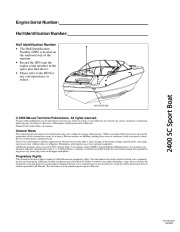 2009 Maxum 2400 SC3 Sport Boat Owners Manual Guide, 2009 - 3 of 60
2009 Maxum 2400 SC3 Sport Boat Owners Manual Guide, 2009 - 3 of 60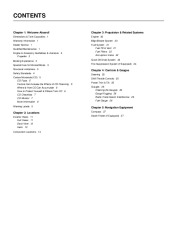 2009 Maxum 2400 SC3 Sport Boat Owners Manual Guide, 2009 - 4 of 60
2009 Maxum 2400 SC3 Sport Boat Owners Manual Guide, 2009 - 4 of 60 2009 Maxum 2400 SC3 Sport Boat Owners Manual Guide, 2009 - 5 of 60
2009 Maxum 2400 SC3 Sport Boat Owners Manual Guide, 2009 - 5 of 60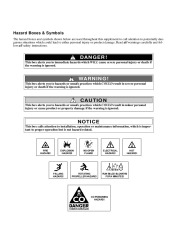 2009 Maxum 2400 SC3 Sport Boat Owners Manual Guide, 2009 - 6 of 60
2009 Maxum 2400 SC3 Sport Boat Owners Manual Guide, 2009 - 6 of 60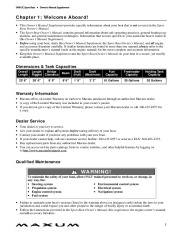 2009 Maxum 2400 SC3 Sport Boat Owners Manual Guide, 2009 - 7 of 60
2009 Maxum 2400 SC3 Sport Boat Owners Manual Guide, 2009 - 7 of 60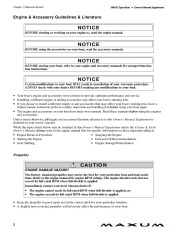 2009 Maxum 2400 SC3 Sport Boat Owners Manual Guide, 2009 - 8 of 60
2009 Maxum 2400 SC3 Sport Boat Owners Manual Guide, 2009 - 8 of 60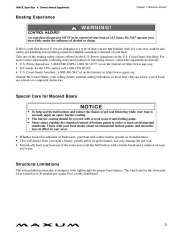 2009 Maxum 2400 SC3 Sport Boat Owners Manual Guide, 2009 - 9 of 60
2009 Maxum 2400 SC3 Sport Boat Owners Manual Guide, 2009 - 9 of 60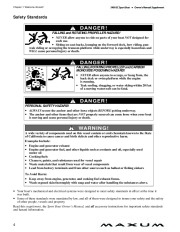 2009 Maxum 2400 SC3 Sport Boat Owners Manual Guide, 2009 - 10 of 60
2009 Maxum 2400 SC3 Sport Boat Owners Manual Guide, 2009 - 10 of 60